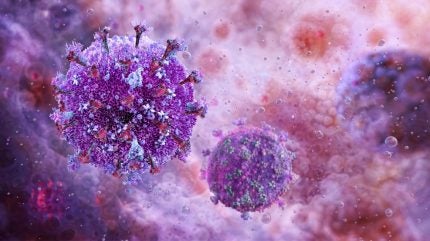
A European 2025 HIV/AIDS surveillance report has revealed that countries within the continent are currently failing to test and treat HIV early.
The annual report, published by the European Centre for Disease Prevention and Control (ECDC), was released on 27 November 2025 but looks at 2024 data. While the report identified a small downturn in HIV cases between 2023 and 2024, testing gaps were still highly prevalent.

Discover B2B Marketing That Performs
Combine business intelligence and editorial excellence to reach engaged professionals across 36 leading media platforms.
This is evidenced by the fact that 54% of patients with HIV across the World Health Organization (WHO) European region in 2024 were unable to receive optimal treatment due to late diagnosis.
This is notable as patients with a delayed HIV diagnosis are less likely to gain the full benefits of antiretroviral (ART) therapies. Currently, ART therapies are the mainstay treatment option for patients diagnosed with HIV, as they can suppress viral load and prevent transmission.
According to the annual report, 105,922 HIV diagnoses were made across the WHO European region in 2024, which includes 53 countries. Of those receiving late diagnoses, the highest proportion were heterosexual patients – especially men – as well as people that inject drugs.
As current testing initiatives across Europe are currently failing to diagnose a majority of patients early, the ECDC noted that the 2030 goal of ending AIDS as a public health threat could be in jeopardy.

US Tariffs are shifting - will you react or anticipate?
Don’t let policy changes catch you off guard. Stay proactive with real-time data and expert analysis.
By GlobalDataTo ensure this goal is achieved, the ECDC and the WHO’s European division are calling for the scale-up and routinisation of HIV testing across the continent, with a key focus on self-testing and community-based options.
According to Hans Henri P. Kluge, WHO regional director for Europe, tackling the silent HIV crisis will involve “removing the deadly barriers of stigma and discrimination” that currently discourage individuals from seeking out a HIV test.
Meanwhile, Pamela Rendi-Wagner, director of the ECDC, stressed the importance of innovating testing strategies, while “ensuring rapid linkage to care” to improve patient outcomes.
A major hit to global HIV treatment efforts came this year came when President Donald Trump cut a large amount of funding for foreign aid. This impacted HIV, malaria and tuberculosis treatment services in low-income countries supported by the United States Agency for International Development (USAID).
Trump also trimmed financial support for the president’s Emergency Plan for AIDS Relief (PEPFAR). The plan has become a major pillar in fighting the global HIV/AIDS response, providing testing services, antiretroviral treatment and education programmes.
HIV treatments advance
Currently, HIV remains a major threat to public health, with the WHO estimating that 40.8 million were living with the disease globally at the end of 2024.
However, there are a wide range of effective ART options available to patients, meaning that those with access to medications have a similar life expectancy to an individual living without HIV.
The most widely prescribed ART is currently Gilead’s Biktarvy (bictegravir/emtricitabine/tenofovir alafenamide), which had a strong financial showing in Q2 2025, with sales jumping 9% to $3.5bn.
While the drug’s patent is up for expiry as early as October 2027, GlobalData analysts predict that no other HIV therapy is likely to surpass Biktarvy in terms of commercial success.
Alongside Biktarvy, Gilead has found a new key asset in Yeztugo (lenacapavir), which the US Food and Drug Administration (FDA) approved as a biannual pre-exposure prophylaxis (PrEP) for patients at risk of HIV in June 2025.
While this treatment is only suitable as a preventive measure, GlobalData analysts note that the therapy is set to revolutionise the HIV landscape.
Now, some companies are looking to cure HIV completely. This includes American Gene Technologies, which is currently looking to take its potentially curative cell therapy, AGT103-T, to additional trials after a Phase I study yielded promising results.
The International AIDS Vaccine Initiative is also working towards a preventive vaccine for HIV, which has seen an adenovirus vaccine enter Phase I clinical trials in Africa. Currently, the jab is being tested in both HIV-positive and HIV-negative individuals.





